How to properly grow an Australian chestnut at home
On the one hand, the Australian chestnut is not a picky plant and can be easily grown at home. On the other hand, you need to know a few rules so that the plant is constantly healthy, despite all the efforts and care for it.
Content:
- General information about the Australian chestnut
- Australian chestnut care
- Breeding Australian chestnut
- Diseases and pests
- Plant application
General information about the Australian chestnut
The Australian chestnut is a plant that in nature can grow up to 30 meters high. At home, its dimensions are much smaller, the maximum height that it can reach is 3 meters.
It belongs to the legume family and has nothing to do with the common chestnut. Its second name is black bean. In nature, it grows in humid forests on the continent of Australia and North America.
Prefers a warm climate.
Features of the plant:
- The flowering period begins in spring and only in natural conditions.
- The flowers are large, orange in color, bloom in late autumn or early winter.
- When grown at home, the appearance of flowers is extremely rare.
- The leaves are evergreen, glossy, densely located on the branches. If you rub them with your fingers from them cucumber aroma emanates.
- The shape of the leaves is oval, at the end they are pointed, slightly wavy at the edges.
- The trunk of the tree is straight branching.
In order to form a beautiful and dense crown, it is necessary to regularly pinch the tops of the branches.
After flowering in late spring, the trees bear fruit. These are pods, the length of which is about 20 cm, inside which there are dark brown seeds. These are beans, each of which can weigh 30 grams. They cannot be used in food, as they are poisonous.
Australian chestnut care
The first thing to pay attention to is the place where the pot with the plant will stand. In the summer, the chestnut needs good natural lighting, but direct sunlight guarantees burns on the leaves. Therefore, it should be shaded or placed on the eastern or northwestern window sills.
Chestnut also dislikes shaded areas, without enough sunlight, the leaves become pale and sore in appearance. The ambient temperature should not rise above 26 degrees. But in winter he does not need warmth. During this period of the year, the Australian chestnut must be kept in a room with a temperature of 12 to 18 degrees.
Watering the plant:
- The Australian chestnut needs moisture regularly, especially during the hot summer season. At this time, it must be watered regularly and made sure that the earthen lump does not dry out.
- Water for irrigation should be soft, it is desirable to defend it.
- In winter, watering is needed much less often. At this time, the earthen lump should dry out a little, but not dry out.
- With regular overflow during the cold season, the chestnut can die due to excess water, which will lead to decay of the roots.
- Chestnut is susceptible to air humidity.In nature, the tree grows in a hot, humid climate, so it is necessary to regularly spray it with warm water at home.
- A warm shower is also good. This process is especially important in winter, when batteries and heaters dry out the air greatly.
- With a lack of moisture, the leaves become faded and dry spots appear on the edges. During the heating period, it is better to remove the plant from the windowsill and batteries.
It is necessary to feed the plant annually in the spring-summer period with mineral fertilizers.
Half of the dose indicated on the package is applied once every 2-3 weeks. If the plant is recent transplanted to feed it is not worth it, it can lead to decay of the roots. Also, do not fertilize sick or recently sick trees. It is worth waiting out 1.5 months of quarantine.
The tree does not need pruning, if the formation of the crown is correct and, starting from a young age, the tops of the branches were pinched. Dried or painful twigs are sometimes removed.
Breeding Australian chestnut
Reproduction of the Australian chestnut occurs with using cuttings and seeds. Seeds can be bought at the store, since flowering in indoor conditions does not occur to take them from nowhere else.
Purchased beans must be soaked in warm water for a day, and the temperature of the water is constantly maintained. This can be done by constant heating, or by placing a container of beans under a hot battery if disembarking in winter. Next, the beans are planted in the prepared soil. It should be fertile and loose, and a thick layer of drainage should be laid out on the bottom of the pot.
Reproduction by seeds:
- The seeds should not be buried, being completely underground, they will quickly rot and disappear. Therefore, chestnut beans are laid out on top of the soil, and the waiting process begins.
- They can sprout in three months at best, and then if the seeds come across fresh.
- Most often, the first shoots appear after 5-9 months, so be patient.
The soil around the chestnuts must be regularly moistened and made sure that they do not become moldy. When shoots appear and leaves are formed on them, you can start feeding. It is worth replanting to a larger pot after the plant has grown stronger.
Cuttings are carried out in the summer:
- To do this, you need to take semi-lignified shoots. They can be rooted in water or soil.
- After the emergence of strong roots, the young plant can be planted in a pot with the mother plant until it fully matures.
- After, during the next transplantation or transshipment of chestnuts, they can be divided.
Young chestnuts need to be transplanted annually; mature trees undergo this procedure only once every 3-4 years.
Pots are selected one size larger than the previous one, so that the roots have more freedom and the opportunity to grow. When transplanting, you should be especially careful not to damage the bone from which the tree grows. She is not only decorative decoration, but also feeds the plant with the necessary substances.
For young trees, a light soil is selected in which the roots will be freely located and receive the required amount of oxygen. For older plants, the soil should be denser. You can prepare the substrate yourself by mixing equal parts of turf soil, compost and sand. You can also add some drainage. Also, adult plants are transferred into larger pots, replacing only the top layer of soil and adding the required amount to the resulting void.
Also, after transplanting, it is worth giving the plant time to adapt without overloading it with watering.
Diseases and pests
The Australian chestnut is quite resistant to pests and diseases that the bulk of home flowers are exposed to.
If dry spots appear on the chestnut leaves, or they turn yellow and fall off, this indicates that the care is not correct.
Extremely dry air or excessive watering. Therefore, it is necessary to follow all the rules for caring for this plant and problems can be avoided. Sometimes a tree may appear spider mite or scale insect, these troubles are easily removed using tools that can be purchased at any gardening store.
Plant application
It is used as an ornamental plant for decorating houses, offices and large premises. In the apartment, it is worth choosing a place carefully so that children cannot reach it, since, along with the fruits, the leaves are also toxic.
The wood of the trees is durable and is used to make furniture. And thanks to a strong root system, trees are planted to reduce soil erosion and strengthen slopes that often experience landslides.
Despite the fact that the fruits of the Australian chestnut are poisonous, some Aboriginal tribes use them for food.
For this the beans are taken out of the pods, and soaked for a long time, constantly draining the water and filling them with fresh. This is followed by a long-term cooking process. Of course, it is not recommended to carry out such a process at home using purchased beans from this tree. The substances in them have a detrimental effect on the human body.
More information can be found in the video.



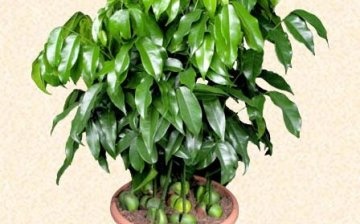
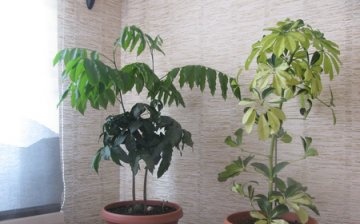

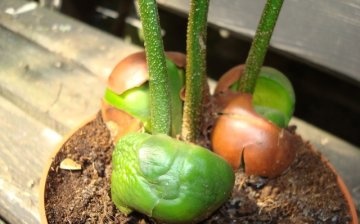
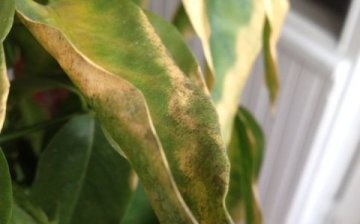
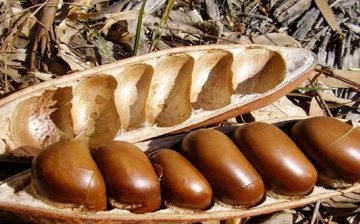






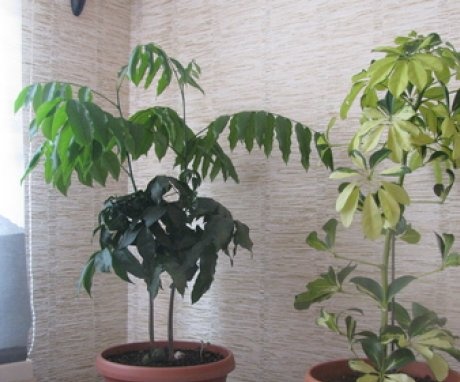
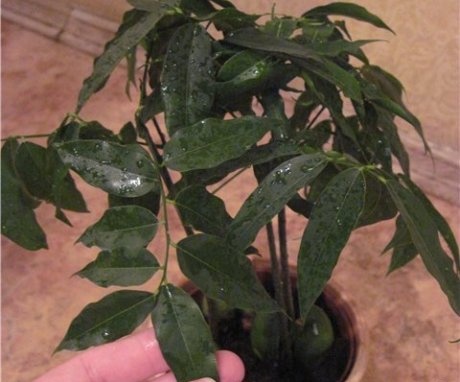

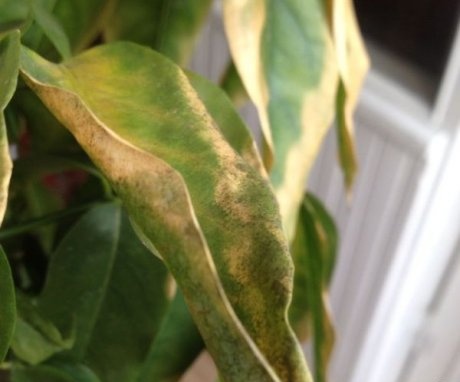
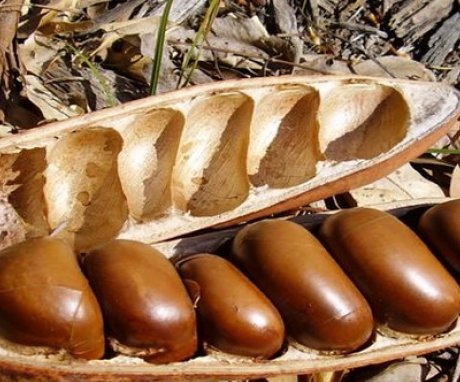
Very interesting article. I would like to have such a plant in my house. But I don't even know where you can buy Australian chestnut, does anyone know?